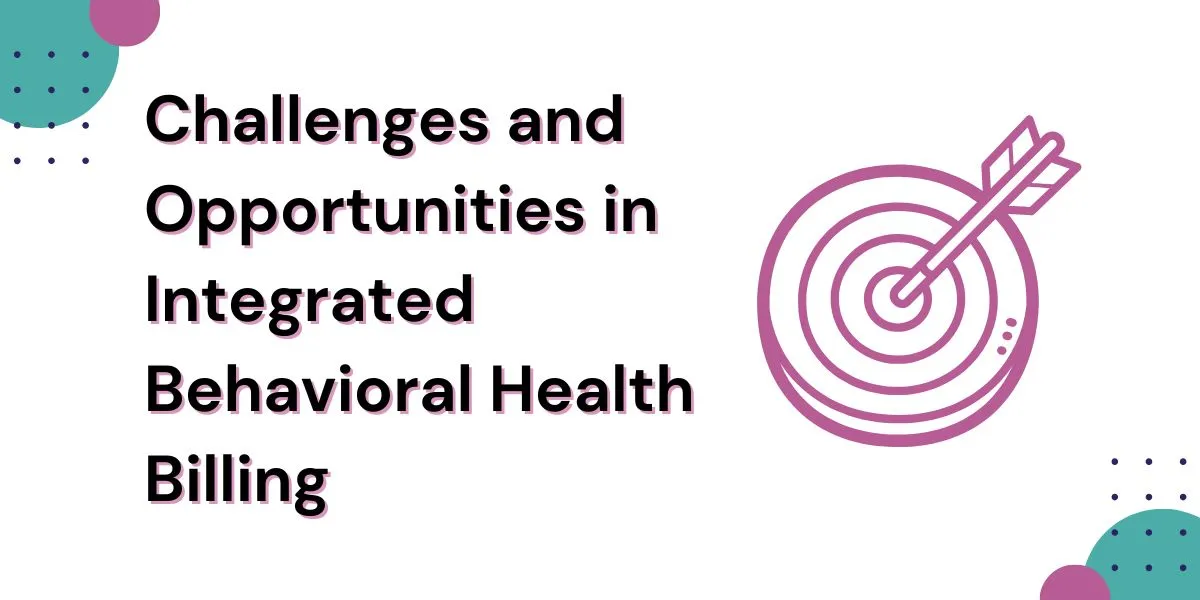Blog

Understanding what integrated behavioral health is, and how to bill for it, has become crucial as healthcare moves toward more holistic, patient-centered models. Integrated behavioral health blends mental health and substance use services into primary care and specialty medical settings. For behavioral health clinicians and medical practices alike, mastering this model—and its billing nuances—is key to sustainability and improved patient outcomes.
At Hansei Solutions, we partner with providers nationwide to help them navigate the complexities of integrated behavioral health, ensuring that both clinical workflows and billing processes align seamlessly with payer requirements. Let’s dive into what integrated care really means—and how to get paid for delivering it.

What is Integrated Behavioral Health?
Integrated behavioral health (IBH) refers to the systematic coordination of general and behavioral healthcare. Instead of treating mental health as a separate silo, IBH embeds behavioral health clinicians—like therapists, psychologists, or substance use counselors—into medical teams. This model ensures that mental health issues are addressed alongside physical health concerns, leading to faster diagnosis, early intervention, and better patient outcomes.
Research highlights the powerful impact of integrated care. One study found that patients receiving collaborative behavioral health services had significantly reduced depression symptoms and improved overall functioning compared to usual care. Integrated care has been shown to lower healthcare costs by reducing emergency visits, hospitalizations, and chronic disease complications.
How Integrated Behavioral Health Works in Practice
In practical terms, integrated behavioral health often means that a patient visiting their primary care physician might be screened for depression, anxiety, or substance use disorders during a routine visit. If concerns arise, a behavioral health clinician on the team can quickly step in to provide assessment, brief interventions, or connect the patient to longer-term care.
Integrated care models vary in intensity. Some practices use a “co-located” approach, where behavioral health providers are physically present in the medical office but operate largely independently. Others adopt a fully collaborative model, where behavioral health and medical providers share records, participate in joint case conferences, and develop unified care plans.
Telehealth is also playing a growing role in integrated behavioral health. The COVID-19 pandemic accelerated the adoption of virtual collaborative care, allowing behavioral health specialists to join medical visits remotely. A 2021 survey by the American Medical Association found that 85% of physicians now use telehealth for at least some patient visits, creating new opportunities—and challenges—for integrating behavioral health services.
Billing for Integrated Behavioral Health Services
Knowing what integrated behavioral health is matters—but understanding how to bill for it is what ensures financial viability for practices delivering these services. Billing for IBH differs from traditional behavioral health billing because it often involves collaborative services, shorter interventions, and unique codes tied to medical settings.
One of the most widely used billing models for integrated care is the Collaborative Care Model (CoCM). Under this model, primary care providers work closely with behavioral health managers and consulting psychiatrists to deliver measurement-driven care for patients with mental health conditions. The Centers for Medicare & Medicaid Services (CMS) has created specific CPT codes for billing CoCM services:
- 99492: Initial psychiatric collaborative care management (first 70 minutes in the first calendar month)
- 99493: Subsequent months of care management (60 minutes)
- 99494: Each additional 30 minutes in a month
These codes allow practices to bill for the time behavioral health managers and consulting psychiatrists spend reviewing cases, coordinating care, and adjusting treatment plans—even when they’re not face-to-face with the patient.
Beyond CoCM, other billing considerations include:
- Behavioral Health Integration (BHI) services, which may be billed using CPT 99484 for general care management services in primary care settings.
- Screening tools, such as the PHQ-9 or GAD-7, which may be billed separately under certain circumstances (e.g., CPT 96127).
- Telehealth billing policies, which vary widely across payers and may influence how integrated services are reimbursed.
At Hansei Solutions, we regularly help providers optimize their billing processes for integrated care, ensuring that collaborative services are documented properly and that claims reflect the full scope of work performed.

Challenges and Opportunities in Integrated Behavioral Health Billing
Billing for integrated behavioral health services isn’t without its hurdles. Common challenges include:
- Complex documentation requirements – Many integrated services require detailed tracking of time spent on care management activities, patient outcomes, and collaborative discussions.
- Payer variability – Not all insurers recognize CoCM codes, and payment rates can vary significantly between payers.
- Workflow adaptation – Practices transitioning to integrated care models must retrain staff and modify workflows to capture the data needed for compliant billing.
Despite these obstacles, integrated care offers significant opportunities. Practices adopting integrated models often see higher patient engagement, improved clinical outcomes, and a competitive edge in attracting patients who want holistic care.
Policy trends increasingly support integrated behavioral health. The federal government continues to incentivize integrated care through Medicare reimbursement, grants, and pilot programs. As healthcare shifts toward value-based care, integrated behavioral health is poised to become the new standard.
Frequently Asked Questions (FAQs) About Integrated Behavioral Health
What is the Collaborative Care Model in integrated behavioral health?
The Collaborative Care Model is a team-based approach where primary care providers work with behavioral health managers and psychiatric consultants to deliver structured, measurement-driven care for mental health conditions. It’s often reimbursed using specific CPT codes like 99492, 99493, and 99494.
Do all payers cover integrated behavioral health billing codes?
No. Coverage varies significantly among payers. While Medicare reimburses CoCM services, some commercial insurers may not recognize these codes or may reimburse at lower rates. Always verify payer policies before billing.
Can integrated behavioral health services be delivered via telehealth?
Yes. Many integrated services can be delivered virtually, including collaborative meetings and patient sessions. However, telehealth reimbursement policies differ among payers, so confirm requirements for coding and place-of-service designations.
Is integrated behavioral health only for primary care?
No. While integrated care is common in primary care settings, it’s increasingly being used in specialty practices like cardiology, oncology, and women’s health to address mental health as part of overall wellness.
Why is billing for integrated behavioral health so complex?
Integrated behavioral health involves unique codes, documentation standards, and collaborative workflows that differ from traditional behavioral health billing. Mistakes can lead to claim denials or underpayment, making expert guidance essential.
A Path Forward for Behavioral Health and Primary Care Teams
Understanding what integrated behavioral health is—and how to bill for it—isn’t just an operational necessity; it’s a strategic advantage. As more healthcare systems embrace whole-person care, behavioral health professionals have a chance to become indispensable members of multidisciplinary teams, shaping the future of patient-centered care.
At Hansei Solutions, we’re committed to helping providers successfully navigate this shift. Whether you’re implementing the Collaborative Care Model, billing for behavioral health integration services, or simply exploring how integrated care fits into your practice, we’re here to guide you every step of the way. Together, we can ensure that your integrated behavioral health services are clinically effective—and financially sustainable.

Ready to focus on providing healthcare? Let us lighten your load.
We’re here to address your pain points and create growth opportunities for your organization. We’re passionate about what we do, and it shows in every interaction. Learn what makes us tick and schedule a demo today.